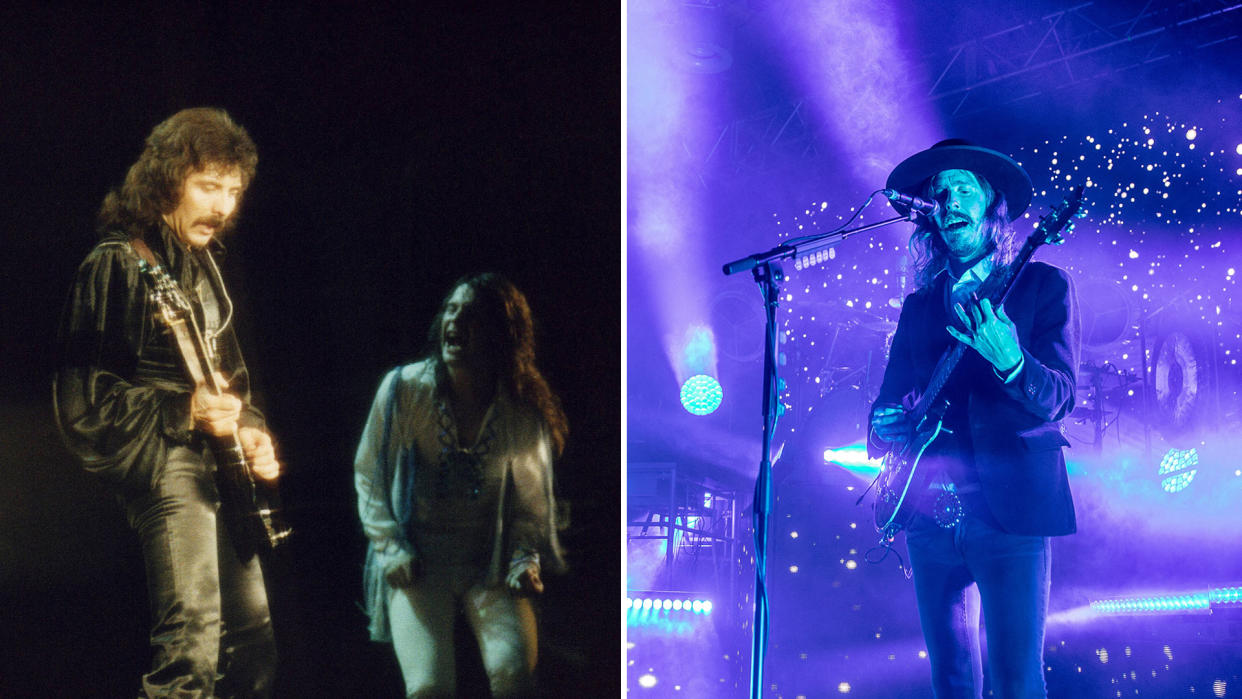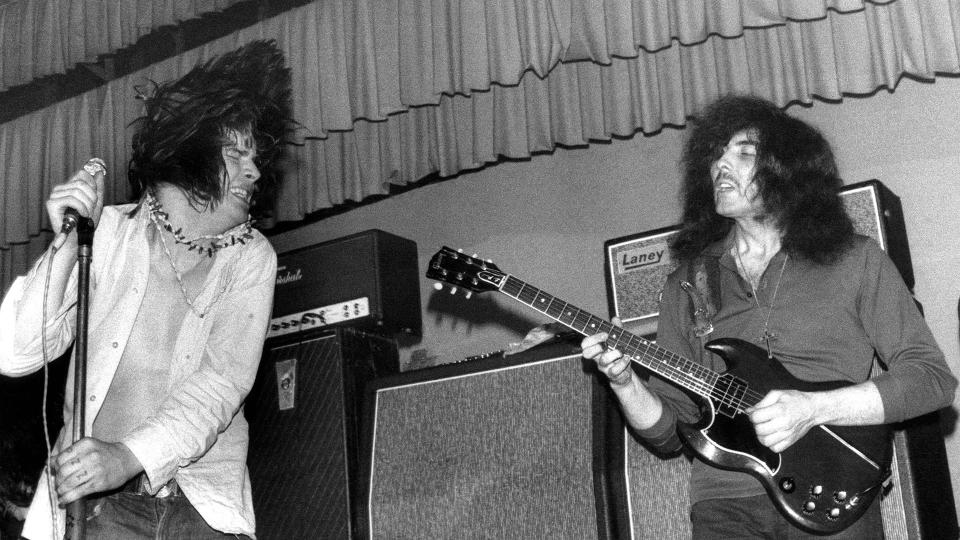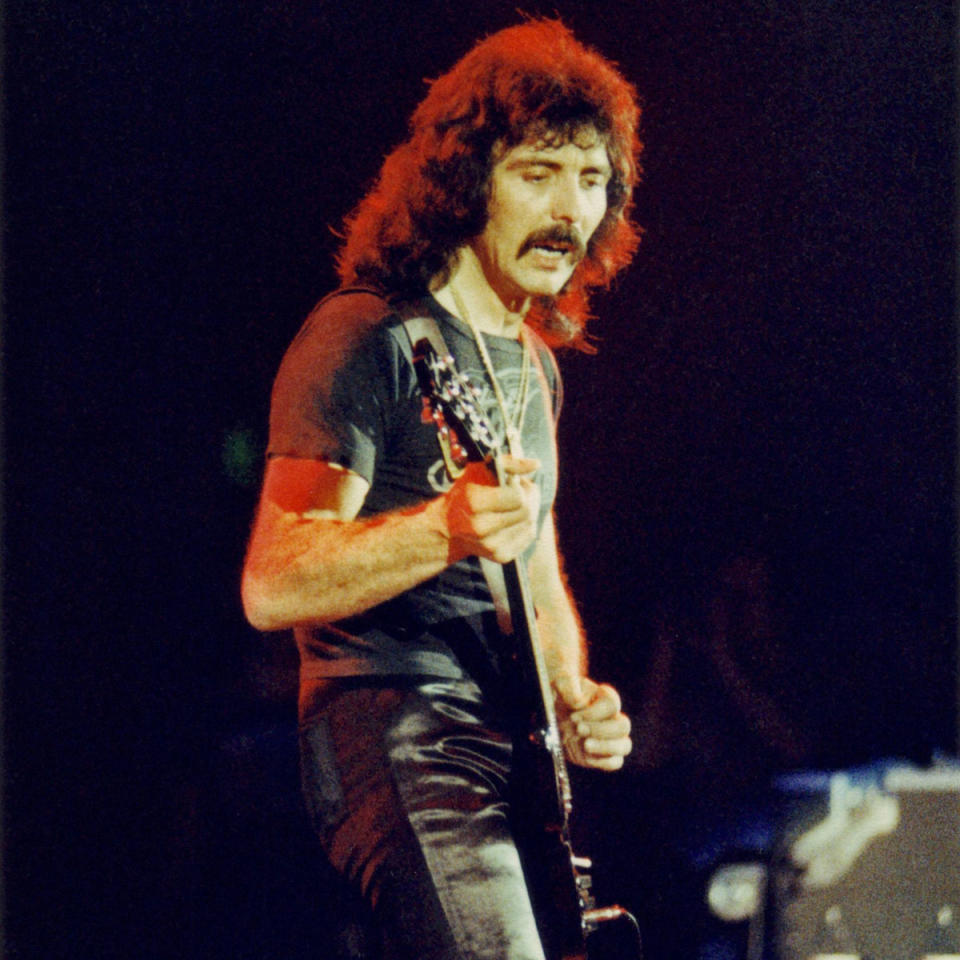“People think his playing is all about the big riffs, but I always loved his jazzy playing – listen to Planet Caravan. You can hear a lot of passing tones”: Opeth’s Mikael Åkerfeldt says there’s way more to Tony Iommi’s guitar style than riffs alone

- Oops!Something went wrong.Please try again later.
- Oops!Something went wrong.Please try again later.
- Oops!Something went wrong.Please try again later.
As the creative visionary in Opeth, the Swedish band who started out making atmospheric death metal before moving further into the realms of progressive rock, Mikael Åkerfeldt knows a thing or two about embracing evolution and daring to dream.
Much like Black Sabbath legend Tony Iommi, he’s guided his band through a smorgasbord of genres and sounds, away from their heavier roots and deep into the kaleidoscopic cosmic beyond…
When we think of SG-wielding guitar gods, it’s usually either Tony Iommi or Angus Young who come to mind first.
“For me, it’s always Tony first. Then there’s Angus, Mick Box from Uriah Heep who used one for a while, and Jimmy Page with the double-neck. There’s even a famous picture of Jimi Hendrix using a white SG with a vibrola. That’s actually one of my dream guitars – a white SG Les Paul Custom with the three PAFs – but I can’t really afford one!
“I do, however, have two SGs in my collection. One is from 1965 with P-90s and the other is a 1961 reissue. You could say buying those guitars was inspired by Tony! Honestly, without those classic Sabbath records, maybe I wouldn’t have been a musician.”

While he’s generally thought of as the inventor of heavy metal, there’s a lot more to Tony Iommi than just heavy riffs…
“Everyone who likes hard rock and metal has to love Sabbath. You could have a one-page advert of Tony in any metal magazine saying, ‘He’s the best’, and that would be correct. But you’re right – people might think his playing is all about the big riffs, which is certainly a part of it. But I always loved his jazzy playing – listen to Planet Caravan.
“You can definitely hear a lot of passing tones, and one of his influences was Joe Pass. Maybe it was a Freudian thing! I also love the jazziness of his acoustic playing in Symptom Of The Universe. That stuff is really special to me, as are the weird Mediaeval instrumentals like Embryo and Orchid.”
They could be very psychedelic and experimental, especially by the time they got Sabbath Bloody Sabbath in 1973…
“I love that album – the final track Spiral Architect could very well be my favorite Sabbath song. It’s very melodic and beautiful. It’s not really riffy, except for that little bluesy bit, with a lot of strings.
“That record has a lot of cool riffs but it’s more of a musical journey than the first four. And the main riff from the title track must have felt super heavy for its time. It’s almost like a death metal riff. So sure, it was heavy at points, but it was mainly just really well-written, exciting music because he started introducing all these odd chord changes.
“There were other bands making heavy music around then, but Iommi took over the world with it. It’s well-documented that Tony had a writer’s block before Sabbath Bloody Sabbath. He got out of it by going more progressive and fucking with his own boundaries.”

Maybe similar things could be said of Opeth’s transition from the death metal of Watershed to the jazz-rock of Heritage?
“I learned a lot of that from Tony, maybe even more than I’m willing to admit. Sabbath were trying new things on Sabbath Bloody Sabbath, Sabotage and Technical Ecstasy. They are strange records, and I can definitely relate to that!”
And, like Tony, you’ve assumed the role of creative leader in your band…
“Tony helmed those recordings. Somebody in that band had to step up and be the creative one, essentially working as a producer. It made sense that it was Tony, because he wrote a lot of those songs. He was the creative guy.
“There was no competition – he was the man when it came to writing all that music. I know how that feels – once you sit in that producer’s chair, it’s down to you to decide where the music goes. I guess I can relate to the excitement of taking control.”

